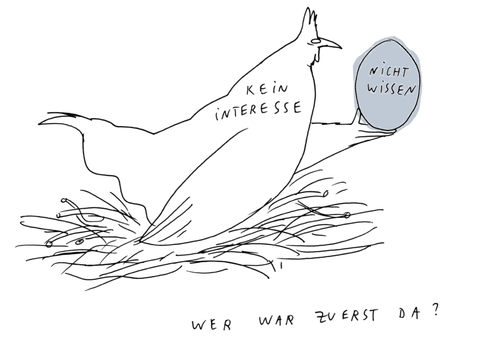Youth and politics - two seperate worlds?
© JoDDiD
What is this episode about?
This contribution from the evening school is about the relationship between young people and politics or democracy. For many years, we were used to describing this relationship as rather distant. The general assumption was that young people are rather disenchanted with politics - or disenchanted with politicians. But is that even true? We want to take a close look at the empirical findings of political culture and youth research and examine this question in depth. The central focus will also be on the question of how the findings of these studies can help us to make civic education programs attractive to young people.
Before we get started:
At just over 60 mins, the "Youth and Politics" episode is an extremely long evening school episode. It discusses statistical data in detail and therefore looks somewhat different from many other editions. However, please don't let this put you off and plan for breaks if necessary. In this episode, too, we try to discuss the central question as clearly and problem-oriented as possible.
The central question is:
How can the relationship between young people and politics be adequately described?
Who am I listening to?
The author and speaker in this episode is Prof. Dr. Anja Besand. The Director of the John Dewey Research Center and holder of the Chair of Didactics of Civic Education at the TUD Dresden University of Technology. You can find out more about her here.
Literature for further reading:
Arnold, Nina et al. (2011): Do you speak politics? Results of a research project and perspectives for action You can find the study online here
Besand, Anja (2017): Of red and blue circles Or: How can we achieve more inclusive civic education? In: Transferstelle politische Bildung, Annual Report 2016, p. 29-34.
Besand, Anja (2009): Politics - no thanks. Problems with the visibility of politics. In: Oberreuter, Heinrich (ed.): Assessment of civic education, Schwalbach, pp. 253-266.
Albert, Mathias/ Hurrelmann, Klaus/ Quenzel, Gudrun (2019): 18th Shell Youth Study. Youth 2019, published by Beltz Verlag, Weinheim.
Kohl, Wiebke/ Seibring, Anne (ed.) (2012): "Invisible" policy program? Bonn.
Schröder, Achim (2016): "Changing the world in small steps." Selected qualitative data from the FES study and their biographical interpretation. In: Gaiser, Wolfgang/ Hanke, Stefanie/ Ott, Kerstin (ed.): Young - Political - Active?! Political attitudes and political engagement of young people in Germany, Bonn, pp. 107-130.
Self-assessment tasks:
For users of the evening school, we provide self-assessment tasks for each lecture. These tasks can be used to rethink the contribution, to deepen your thoughts or - if you want to obtain a certificate of further education - to prepare for the course exam.
Question 1: the relationship between young people and politics is often described as a polar relationship. How would you describe this relationship?
Question 2: What can be said about this relationship on the basis of empirical studies and which attitudes of young people are particularly noteworthy for civic education?
Question 3: What could meaningful civic education programs look like that are aimed at young people who say they are not interested in politics?
Question 4: Compare the figures on political interest (e.g. from the Shell study) with the figures on willingness to get involved (e.g. from the German Youth Institute DJI). How do you explain the differences? What conclusions can be drawn from these findings for political youth education?
Question 5: Read the ZEIT article on Generation Y, which is available here, and comment critically on it. What consequences would you draw from the situation described for civic education? How can young people from more precarious backgrounds be addressed?
Question 6: This image is intended to describe the relationship between political knowledge and political interest - how would you describe this relationship? Develop pictorial alternatives!
Question 7: With regard to political interest, trust and willingness to participate, there are still clear differences between young people in East and West Germany today. Discuss this connection with your family, friends or colleagues! How do you explain these differences? Describe how they come about using examples from everyday life.
The self-assessment tasks are to be understood as opportunities for reflection and do not generally test knowledge. They are always strongly related to the corresponding lecture and therefore differ greatly.

